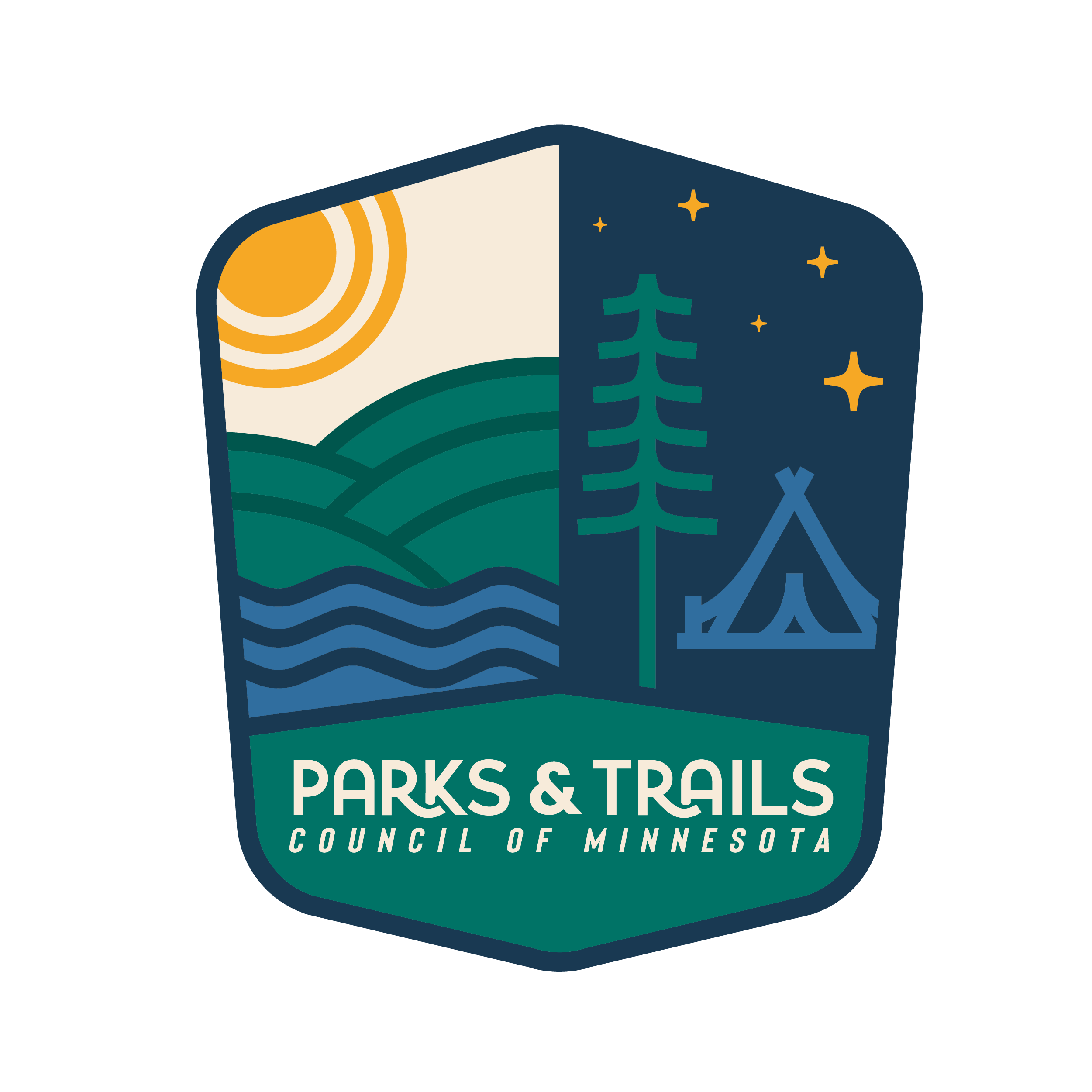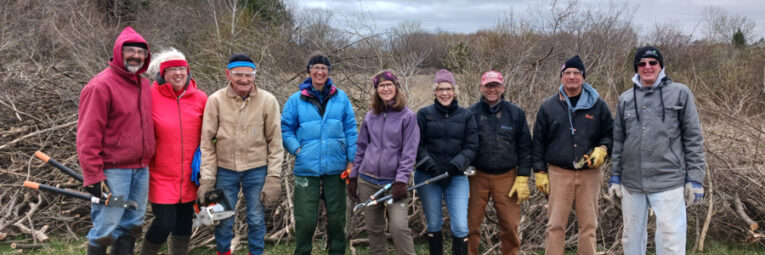About a dozen residents of Scandia braved cold winds, wet ground, and prickly ash on April 20th in the name of restoring Liten Park. The park, recently acquired by the City of Scandia, is currently an irregularly shaped trapezoid of long grasses and woody bracken. The Friends of Scandia Parks & Trails, using habitat restoration grant funding from Parks & Trails Council, set out to cut down the site’s dense thickets of Tatarian honeysuckle and occasional buckthorn in preparation for two pollinator surveys and a volunteer-led seeding event in the fall.
As anyone living in Minnesota knows all too well, 2024’s weather to date has been wildly unpredictable, but April 20th was almost reassuringly surly – gray clouds, brisk wind, and cold, waterlogged grasses greeted the small group of volunteers. Luckily, most of them had packed waterproof boots, and they set to work clearing the underbrush from the edge of the park. Several members cut the brush with hand tools, while others banded together to haul the downed branches off to a growing pile of woody underbrush at the edge of the property, where the City of Scandia would pick it up. After cutting, volunteers applied herbicide to the stumps to prevent the honeysuckle and buckthorn from growing back.
This work was part of a longer, three-year process supported by a combination of public and private dollars. The first phase, funded by a combination of Parks & Trails Council, City of Scandia, Conservation Partners Legacy (CPL), and Scandia-Marine Lions grant funding, is focused on clearing vegetation, conducting pollinator surveys, and spreading a mix of native forbs and grasses on the site. Subsequent years of restoration will be funded by the City of Scandia and the CPL grant. Ultimately, the hope is that the Friends of Scandia Parks & Trails, in partnership with the City of Scandia, will be able to take Liten Park from a patch of land overgrown with invasive species to a diverse planting of native species that benefit pollinators and other wildlife. This project is considered to be especially important by its organizers because of the land’s proximity to William O’Brien State Park; the hope is that a restored Liten Park will provide one more connecting patch of habitat for native pollinators in the area.
But the group is taking it one step at a time. By the end of the work session on April 20th, the volunteers were tired but satisfied with their work, and the City had a mountain of underbrush to pick up. The intimidating barrier of invasive plants was gone, and Liten Park was that much closer to becoming a haven for pollinators.





